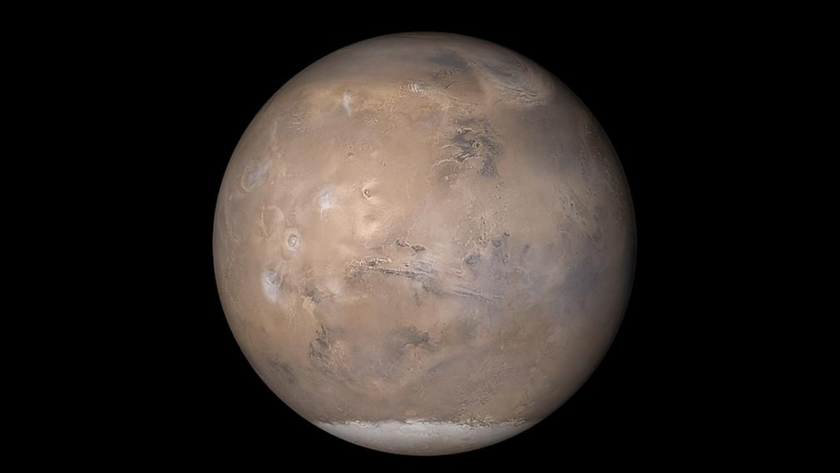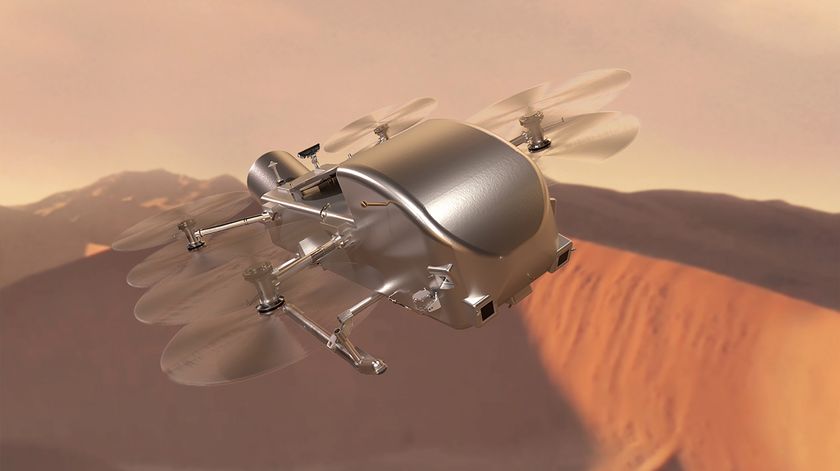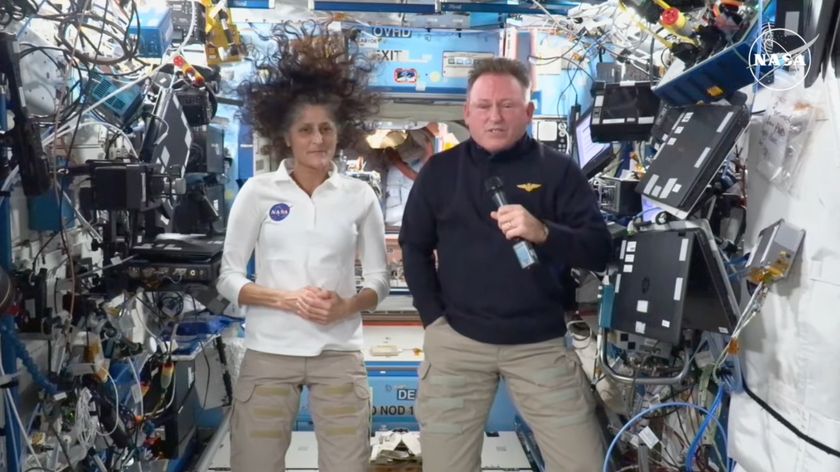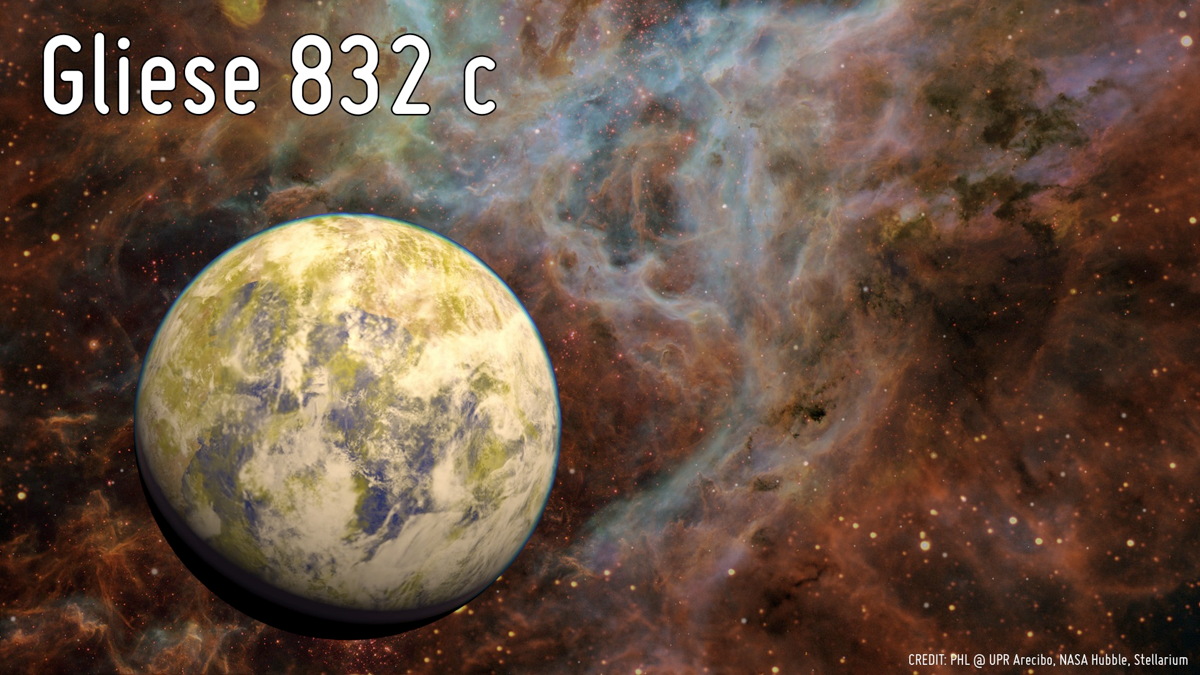
A newfound alien world might be able to support life — and it's just a stone's throw from Earth in the cosmic scheme of things.
An international team of astronomers has discovered an exoplanet in the star Gliese 832's "habitable zone" — the just-right range of distances that could allow liquid water to exist on a world's surface. The planet, known as Gliese 832c, lies just 16 light-years from Earth. (For perspective, the Milky Way galaxy is about 100,000 light-years wide; the closest star to Earth, Proxima Centauri, is 4.2 light-years away.)
Gliese 832c is a "super-Earth" at least five times as massive as our planet, and it zips around its host star every 36 days. But that host star is a red dwarf that's much dimmer and cooler than our sun, so Gliese 832c receives about as much stellar energy as Earth does, despite orbiting much closer to its parent, researchers said. [10 Exoplanets That Could Host Alien Life]
Indeed, Gliese 832c is one of the three most Earth-like exoplanets yet discovered according to a commonly used metric, said Abel Mendez Torres, director of the Planetary Habitability Laboratory at the University of Puerto Rico at Arecibo.
"The Earth Similarity Index (ESI) of Gliese 832c (ESI = 0.81) is comparable to Gliese 667Cc (ESI = 0.84) and Kepler-62e (ESI = 0.83)," Mendez wrote in a blog post today (June 25). (A perfect "Earth twin" would have an ESI of 1.)
"This makes Gliese 832c one of the top three most Earth-like planets according to the ESI (i.e., with respect to Earth's stellar flux and mass) and the closest one to Earth of all three — a prime object for follow-up observations," he added.
A team led by Robert Wittenmyer, of the University of New South Wales in Australia, discovered Gliese 832c by noticing the tiny wobbles the planet's gravity induces in the motion of its host star.
Get the Space.com Newsletter
Breaking space news, the latest updates on rocket launches, skywatching events and more!
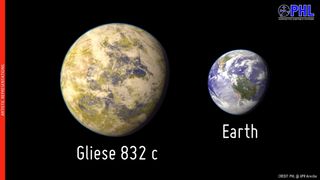
They spotted these wobbles in data gathered by three separate instruments — the University College London Echelle Spectrograph on the Anglo-Australian Telescope in Australia, the Carnegie Planet Finder Spectrograph on the Magellan II telescope in Chile and the High Accuracy Radial Velocity Planet Searcher (HARPS) spectrograph, which is part of the European Southern Observatory's 11.8-foot (3.6 meters) telescope at the La Silla Observatory in Chile.
Gliese 832c is the second planet to be discovered around the star Gliese 832. The other one, Gliese 832b, was found in 2009; it's a gas giant that circles much farther out, taking about nine years to complete one orbit.
"So far, the two planets of Gliese 832 are a scaled-down version of our own solar system, with an inner, potentially Earth-like planet and an outer, Jupiter-like giant planet," Mendez wrote.
However, it's unclear at the moment just how much Gliese 832c resembles Earth. Indeed, its discoverers think the newfound world may be more similar to scorching-hot Venus, with a thick atmosphere that has led to a runaway greenhouse effect.
"Given the large mass of the planet, it seems likely that it would possess a massive atmosphere, which may well render the planet inhospitable," Wittenmyer and his team wrote in their paper, which has been accepted for publication in The Astrophysical Journal. "Indeed, it is perhaps more likely that GJ [Gliese] 832c is a 'super-Venus,' featuring significant greenhouse forcing."
Follow Mike Wall on Twitter @michaeldwall and Google+. Follow us @Spacedotcom, Facebook or Google+. Originally published on Space.com.
Join our Space Forums to keep talking space on the latest missions, night sky and more! And if you have a news tip, correction or comment, let us know at: community@space.com.

Michael Wall is a Senior Space Writer with Space.com and joined the team in 2010. He primarily covers exoplanets, spaceflight and military space, but has been known to dabble in the space art beat. His book about the search for alien life, "Out There," was published on Nov. 13, 2018. Before becoming a science writer, Michael worked as a herpetologist and wildlife biologist. He has a Ph.D. in evolutionary biology from the University of Sydney, Australia, a bachelor's degree from the University of Arizona, and a graduate certificate in science writing from the University of California, Santa Cruz. To find out what his latest project is, you can follow Michael on Twitter.
